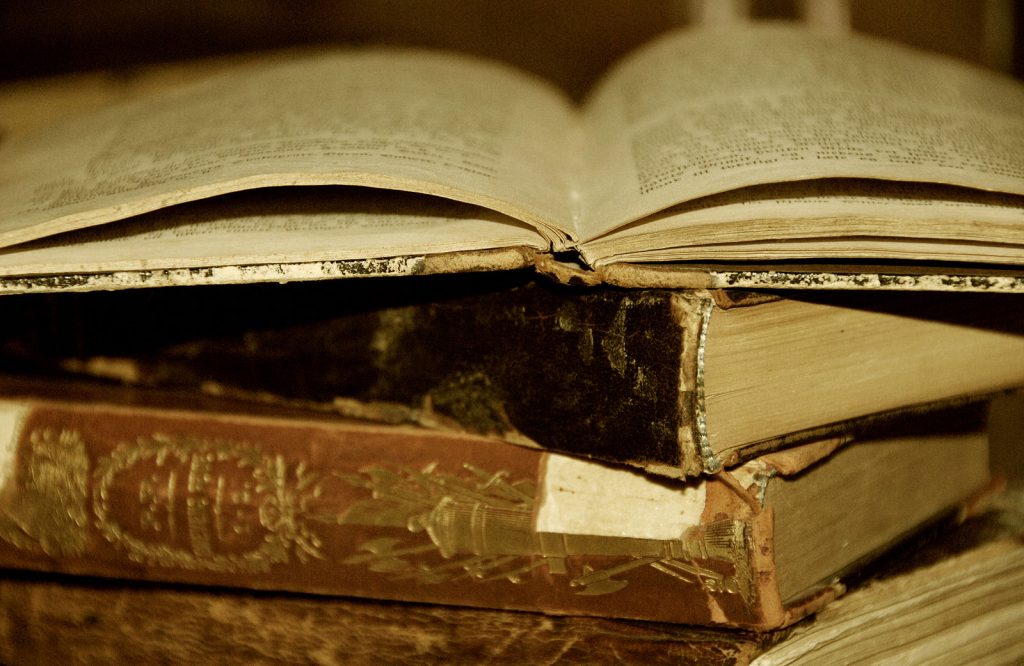
Prof. Newton shares how a little bit about his approach to helping students consider historiography. His memo assignment reminds students that they have a substantial role in writing the history they are studying. It’s a simple assignment that is useful for the novice and professional historian alike.
One of the standard skills in a university education is the reading of a historical text. Traditionally this learning objective is explained in terms of two competencies–the engagement of primary sources and the use of secondary sources to assist in the interpretation of those primary sources.
In fact, the very design of historical curricula is often presented in these very terms, though by other names.
Primary Sources— aka a historical reader, an anthology, a sourcebook.Media, objects, and other artifacts from the time and place being studied.
Secondary Sources—aka textbook, commentary, survey.
Discussion designed to help explain media, objects, and other artifacts from a time and place of interest.
An enterprising historian will work to diligently build their understanding upon primary sources while also being tutored in the lessons provided in secondary sources–whether those lessons are insightful observations or mistakes to be amended through closer study of the primary sources.
As Andie Alexander has argued, this commonplace setup of history places emphasis on the varied presentations of the past without really grappling with the role of the presenters. For a history student in a class, secondary sources become “primary” or paramount because they usually offer a convenient and accessible presentation of the past that fits with what the student already knows while also filling in gaps of knowledge.
This is similarly true of the professional historian, whose own reading of a primary text may seem outlandish when compared to the secondary literature. Should the historian be innovative and bold or temper their novelty with compromise and consensus?


The question becomes who is primary and secondary in the historical enterprise.
Insofar as those of us in the university are always dealing with the legacies of the past, I think African American writer Alex Haley’s elastic approach to history is rather informative. In a 1979 interview, he said that “history is three different things.”
- It is what you research and collect as material, how you interpret it, and then how you write it.
- It is secondly how I do exactly the same process along with umpteen other people who may do the same;
- …history is what really happened which none of us ever really will know.
This led him to remark that “history”–contrary to those who think they’ve written and read the final word on the past–“is not constant.”
When I return to the primary/secondary schema in light of Haley’s reading of history, I see a reminder to examine the historian reading. This is as much about the research, collection, interpretation, and writing as it is about each of the umpteen people going about that work.
That work happens in the gulf between never-really-knowing and presenting-what-really- happened. That gulf is wide, and rather than floundering in it, perhaps a history class is where we can explore what may be done in it. What might this look like?
Beginning Questions
- What stands out to you from the reading?
- What questions do you have?
Intermediary Questions
- Who is the author of the reading and their audience?
- What does the author hope to convey to their audience?
- How does this compare to similar authors and audiences that you know in terms of a) the historical context–that is, similar time and places and b) the social context–the stakes and concerns that people have faced in a variety of places and times. Put differently, what does this remind you of?
- What are others saying about what you are reading?
Final Questions
- What stands out to your from the reading?
- What questions do you have?
As I listed these points, I was tempted to order them in a sort of sequence, but the reality is that what we think of as history is all of these happening at roughly the same time. I think then that it is perhaps more useful to start with questions from the first group (in whatever order), then move to questions from the second group (in whatever order), and then move to questions from the third.
The notes created are the makings of history and the new-to-you beginnings of knowledge. Give it a try and see what happens. It might make all the difference in the world.
And speaking of making a different world, one way to remind yourself that you and your student historians are in process is to sketch a quick timeline and map of what you each think is noteworthy.
TL;DR? Create your your own memo by answering the three sets of questions, drawing a map, and making a timeline.
And if you’re so lucky to have colleagues and classmates engaged in a similar activity, you can share what you’ve learned. The insights gleaned will show that histories don’t write themselves. We all have something to do with it.
Get the memo? Take notes.